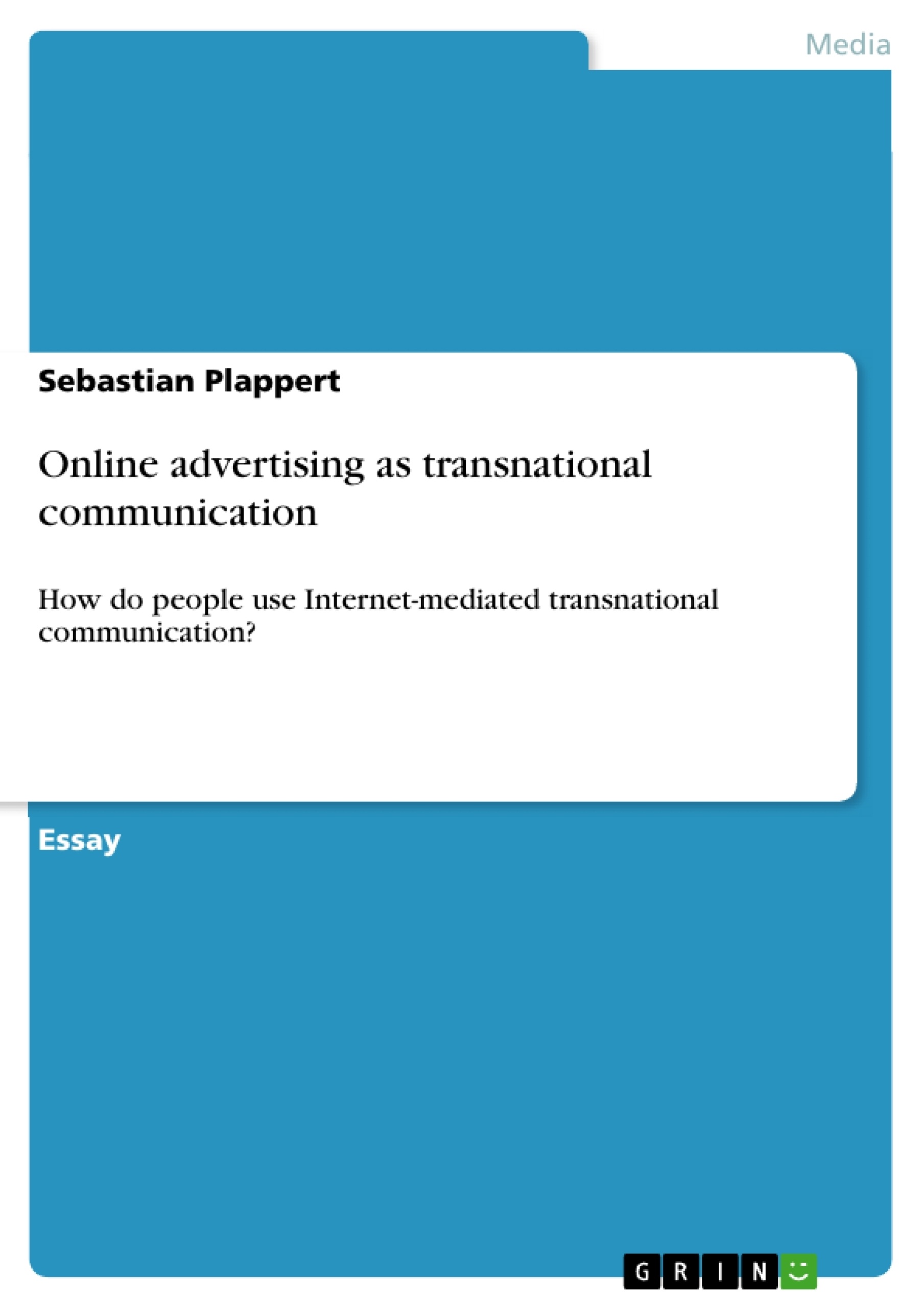Emanating from the advertising industry's perspective, this papaer will examine the role of internet users as consumers. After briefly considering the effects of globalisation on advertising, the paper will describe the most prominent methods of online advertising, before exploring the applied concept of addressing users as consumers in the World Wide Web.
Inhaltsverzeichnis (Table of Contents)
- Global advertising
- Methods of online advertising
- Banners
- Pop-ups
- Commercial websites
- Video and online games
- Search engines
- What is new about online advertising
- Going online
- Narrowcasting advertising
- Becoming a consumer
Zielsetzung und Themenschwerpunkte (Objectives and Key Themes)
This essay explores the role of internet users as consumers in the context of online advertising, examining how the advertising industry utilizes the internet to reach and influence target audiences.
- The impact of globalization on advertising
- Different methods of online advertising and their effectiveness
- The unique characteristics of online advertising compared to traditional media
- The concept of narrowcasting advertising and its application to reach specific target groups
- The blurring of boundaries between advertising, brand promotion, and information online
Zusammenfassung der Kapitel (Chapter Summaries)
- Global advertising: This section discusses how globalization has led to a more homogenized advertising landscape with similar needs and product offerings across cultures. It also explores the idea that globalization can lead to cultural assimilation and the need for culturally sensitive advertising.
- Methods of online advertising: This chapter delves into various methods of online advertising, including banners, pop-ups, commercial websites, video and online games, and search engine advertising. It analyzes the effectiveness and characteristics of each method.
- What is new about online advertising: This chapter examines the unique aspects of online advertising, highlighting its ability to reach global audiences while still addressing local and cultural nuances. It discusses the interactive nature of the internet and how users actively choose the information they want to receive, leading to a need for captivating and engaging content.
- Going online: This section explores the multifaceted reasons people go online, including access to information, entertainment, and professional activities. It emphasizes that online activities transcend traditional boundaries between work and play, highlighting the "embodied beings" in cyberspace.
- Narrowcasting advertising: This chapter focuses on the concept of narrowcasting advertising, where ads are targeted to specific, homogeneous groups based on their location, language, or interests. It highlights how this approach allows advertisers to reach their audiences with highly relevant messages.
- Becoming a consumer: This section explores the concept of internet users as potential customers. It discusses how online advertising aims to increase brand awareness and persuade users to buy products or services, even if they are not actively seeking this information. It also examines how advertising methods can still be effective even when users are engaging in activities other than shopping online.
Schlüsselwörter (Keywords)
The main keywords and focus topics of this text include online advertising, globalization, cultural influences, advertising methods, narrowcasting, target groups, internet users, consumers, and the blurring of boundaries between advertising, brand promotion, and information.
- Quote paper
- MIR, MA Sebastian Plappert (Author), 2007, Online advertising as transnational communication, Munich, GRIN Verlag, https://www.grin.com/document/153937



